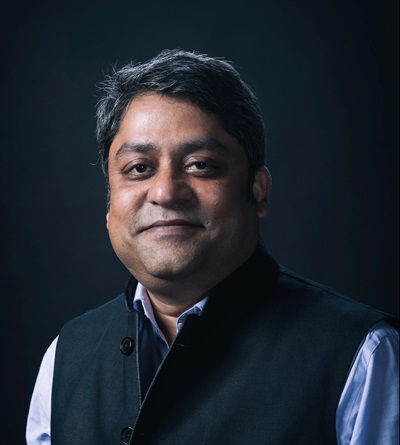.png)
Budget Spends Well Short Of Aim, Including For Dozen Schemes With PM Prefix
At least a dozen development programmes named after prime minister have seen spending shortfalls of 15-62% in 2024-2025. Let’s keep fingers crossed for the next financial year as these schemes have optimistic allocation yet again.


Rajesh Mahapatra, ex-Editor of PTI, has deep experience in political and economic journalism, shaping media coverage of key events.
February 1, 2025 at 3:33 PM IST
The Union Budget often garners attention for new schemes, but the real story lies in their execution. Despite ambitious allocations, key programs like PMAY and Jal Jeevan Mission face significant spending shortfalls, raising concerns about rural distress and economic growth. Effective governance, not new announcements, holds the key.
When it’s time to unveil the Union Budget, few finance ministers have missed the opportunity to announce new schemes and new plans. Finance Minister Nirmala Sitharaman’s eighth budget – a record of sorts – was no exception. There was not much change either in the style, content or the sequence of the announcements.
First off the block were a plethora of programmes for farmers, then came plans for the rural poor followed by schemes for small businesses, youth and women. As in the past, these announcements would make the headlines in newspapers and on television channels.
Once the budget season is over, most people forget about it. Rarely, attention is paid to how these schemes fare, how is the money meant for them spent?
But the devil is in the detail.
It was expected that the government would intervene with its fiscal policy to support growth through a boost to consumption in urban and rural areas. The middle class got some relief, their rural counterparts were not lucky.
Not just for the coming financial year, the fine print shows that there has been significant shortfall in actual spends on the various development schemes in 2024-25. Did that actually contribute to the slowdown?
Sample this: there are at least a dozen programmes with prime minister or PM prefix that have seen spending shortfalls in 2024-2025 ranging from 15% to 62%. If this holds true again this year, meaning the government is not expected to spend a good part of what it budgeted for these schemes last year.
Another half dozen schemes, that may not be named after the prime minister but are equally important, have also seen major shortfalls in utilisation of the allocated budget.
Topping the list are the twin housing programmes – PM Awas Yojana-Rural and PM Awas Yojana-Urban. Union Budget 2024-2025 allocated ₹54,500 crore for PMAY-R but revised estimates released on Saturday showed the government may spend only ₹324.26 billion, a shortfall of 40%. Similarly, against a budget estimate of ₹301.71 billion, the government is expected to spend ₹136.70 billion, a shortfall of more than 50%.
Another important scheme that has seen a big shortfall – almost a quarter – is the PM Gram Sadak Yojana, for which the revised estimate is pegged at ₹145 billion against the budgetary provision of ₹190 billion.
But the most disturbing trend is seen in the case of Jal Jeevan Mission that was launched with much fanfare to ensure supply of safe drinking water to villages across the country. Against an allocation of ₹701.63 billion, the government may spend only ₹226.97 billion or 68% less.
Such shortfalls in flagship schemes explain the growing despair in rural India, which is beginning to cast its spell on the growth of the broader economy. People looking for non-farm employment opportunities in villages are not getting the same; nor are they able to migrate to cities because there are not enough jobs getting created there.
Needless to say, if the government was able to spend the money intended for these schemes, it would have significantly reduced rural distress. PMAY not only generates jobs and housing for the poor, but also adds to demand for cement, iron and all such materials used in construction.
The Jal Jeevan mission could have created lakhs of jobs in rural India, while adding to demand for pipes, pumps and other materials that are needed for laying pipelines for drinking water. More importantly, it could help improve health conditions and thus aid labour productivity.
Similarly, the PM Gram Sadak Yojana not only boosts demand for road construction material and creates jobs, but also contributes to mobility and quality of life in rural India.
It is, therefore, imperative that the government focuses on effective execution of existing plans and their governance, instead of bringing new schemes and plans, no matter how compelling they may sound.



